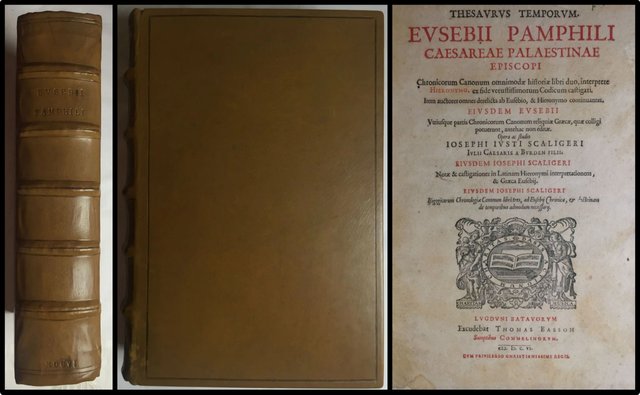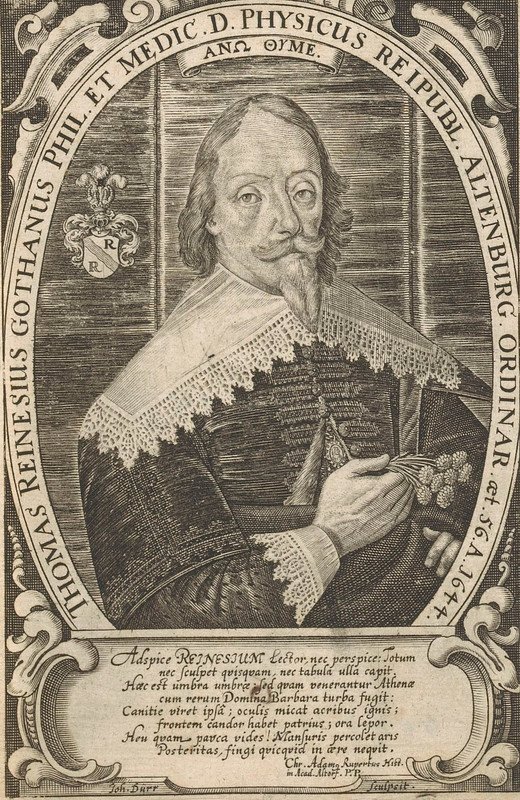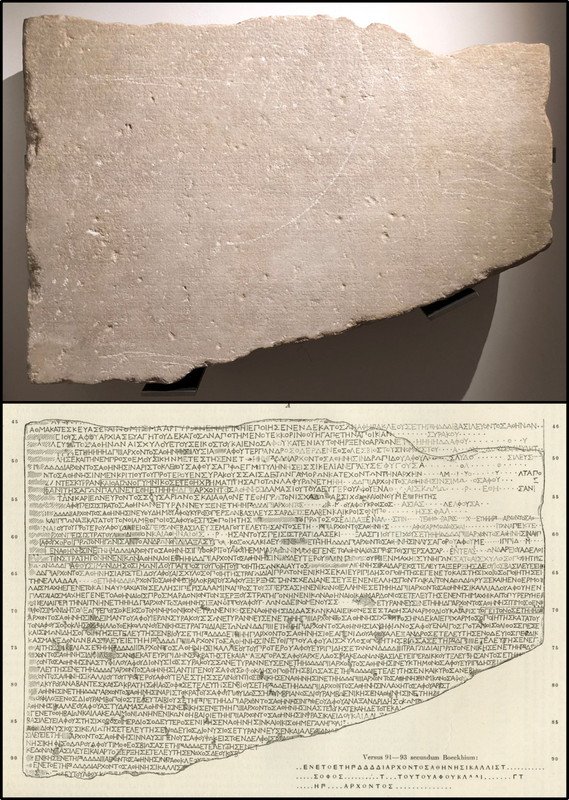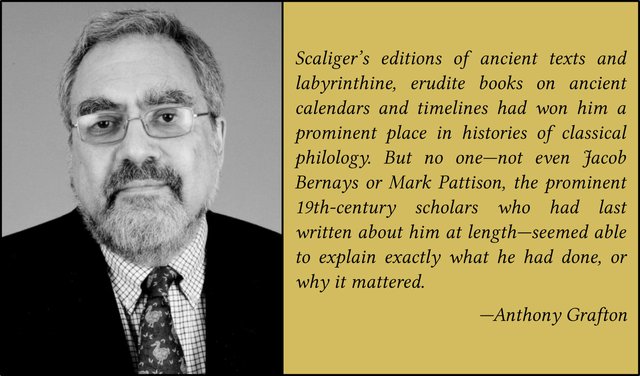Scaliger’s Thesaurus Temporum

In 1606 Joseph Juste Scaliger’s long-anticipated edition of Eusebius’s Chronicon was published in Leiden. Scaliger had originally set out to produce a new edition of St Jerome’s Latin translation of the Chronicon, but the final work was much more than this. Scaliger’s researches had convinced him that the Chronicon originally consisted of two books, only the second of which Jerome had translated. So he set out to reconstruct the lost first book. He also sought to collate as many early manuscripts of Jerome’s translation as he could find in order to produce as clean and accurate an edition as possible.
How close Scaliger came to recovering the lost opening book of the Chronicon was not revealed until the 19th century. In 1818 a complete edition of the Chronicon was published in Venice from a 12th-century manuscript which contained a copy of an anonymous 5th-century translation of the work into Armenian:
Scaliger would certainly not have been discouraged had he known that an Armenian translation of the entire Chronicle existed in his time, though he would have longed to see it. Had he managed to do so (... he did meet and talk with Armenians), he would probably have crowed with delight. For the Armenian text is laid out in two books, one discursive and one tabular. And the first book, for all the differences of detail, does contain many of the constituent texts Scaliger was certain should be there, from fragments of Berosus’ Babyloniaca and Manetho’s list of Egyptian dynasties to the remains of later historians like Abydenus, Alexander Polyhistor, and Cephalion. True, the Armenian Eusebius has more to say than Scaliger’s Greek one about historical source-criticism and chronological method. And his Babylonian and Egyptian records are presented in their entirety in individual chapters, not chopped up and interspersed in chronological sequence. But these flaws, if flaws they are, hardly outweigh Scaliger’s extraordinary recovery of the general form and content of a major book by a major ancient author, the existence of which no previous scholar had suspected.―Grafton 547–548
If Scaliger had erred, it was in leaning too heavily upon George Syncellus. Much of what Syncellus had taken from Sextus Julius Africanus Scaliger had mistakenly attributed to Eusebius―who flourished about a century after Africanus―believing that Eusebius’s Chronicon was an epitome of Africanus’s, and George Syncellus’s an epitome of Eusebius’s (Grafton 544).
The Olympiads
To his reconstruction of Eusebius’s Chronicon Scaliger appended the Historion synagoge [Collection of Histories], a compilation of historical fragments from ancient and medieval sources. The best known of these is the Olympiadōn Anagraphē [Register of Olympiads], which Scaliger reconstructed from several disparate sources. This work is often mistaken for an ancient text. This error goes back to the latter half of the 17th century, an age which Anthony Grafton characterizes as more rationalist than rational:
... many of the critical historians of the day applied their burnished tools and complex techniques to what now seem obviously futile enterprises. No specimen of the latter sort is more characteristic or more zany than that provided by Thomas Reinesius in his Epistolae ad Hoffmannum et Rupertum, professores Noricos of 1660. Here he analysed the chronicle of ancient history, organized by Olympiads and written in Greek, that forms the best-known part of the Historion synagoge, the collection of fragments that follows the Greek Eusebius in Scaliger’s Thesaurus. Reinesius rightly pointed out that this work drew on two fragments of the lost ancient Olympiad chronicle by Phlegon of Tralleis (second century AD). But he then inferred that the Ὀλυμπιάδων ἀναγραφή was an ‛epitome’, itself ancient, of Phlegon’s work. ―Grafton 549
Other scholars who have followed Reinesius down this false path include Christian Gottlob Heyne, Gotthold Ephraim Lessing, Pierre Bayle, Perizonius, and Georg Anton Friedrich Ast (Grafton 549–550).

As Grafton points out, we owe this information and much more besides to the German philologist Ewald Scheibel, whose edition of Scaliger’s Ὀλυμπιάδων ἀναγραφή was published in Berlin in 1852. Scheibel’s study uncovered many of the shortcomings of Scaliger’s work:
Scheibel showed that the two Greek passages from Phlegon that Scaliger used had appeared in print before 1606, the one published by Xylander, as a fragment, in 1568 ... and the other by Hoeschel ... in 1601 ... He proved that in this and many other cases the dates and facts given in the Anagraphe could not have come from any sources save the printed editions available to Scaliger―errors in which had often tripped him up ... he showed that the Anagraphe incorporated many references to Scaliger’s distinctive doctrines; wrong or peculiar dates for events, given by Scaliger in the De emendatione temporum and elsewhere, reappear here in some profusion ... ―Grafton 550
Scheibel also showed that the format Scaliger adopted for the Anagraphe was taken from the one surviving entry in Phlegon’s chronicle:
By each Olympiad’s number appear the names of victors in the short race (stadion) and, in many cases, other events as well. Then, year by year through the Olympiad appear its main events. The list added to the names of Olympiad victors those of Athenian archons, where they were preserved. But it concentrated on three sorts of material above all: the backbone of precise dates, the lives of great political figures, and the reconstruction of Greek cultural history―especially the history of literature and the dates of inventions. It cited the names of many authorities on ancient chronology whose works survive only in fragments―Philochorus, Apollodorus, and the like. But it derived its information entirely from sources known in Scaliger’s time, and its content thickened appreciably in those sections where it could follow a single preserved text, like Diodorus or Polybius, as compared to those where it depended entirely on bricolage. The text, in short, was clearly modern, not ancient. But it resembled in some aspects of format and scope a major preserved piece of ancient chronography which did not reach print until Scaliger was long dead: the Parian Chronicle, first published, with a brilliant commentary, by John Selden in 1628. This real Hellenistic chronicle shows exactly the same zeal to identify the πρῶτος εὑρετής [discoverer] of every imaginable form and artefact―material, spiritual, artistic―that Scaliger wrote into his imaginary one. Accordingly, this small segment of the Thesaurus must be considered as remarkable a conjectural reconstruction as the larger one which it accompanied. ―Grafton 550–551

The Historion synagoge takes up pages 313–399 of the Thesaurus Temporum. The complicated history of this treatise is traced in Volume 2 of Anthony Grafton’s Joseph Scaliger: A Study in the History of Classical Scholarship.
Rules of Chronology
The last three books of the Thesaurus Temporum comprise Scaliger’s final treatise on the subject of chronology: the Isagogici Chronologiae Canones, or Introductory Rules of Chronology. This synthesis of a lifetime’s study of the science and practice of chronology is Joseph Scaliger’s final verdict on the subject. It was written as an introduction―a primer, if you will―to his other masterpiece, the De emendatione temporum. Scaliger’s approach to the subject is described by Grafton as Euclidean:
Scaliger’s treatment of the Greek calendar, for example, did not externally resemble those in his earlier works. Book 1, chapter 7 of the Canones begins with an Attic calendar that lists the twelve months, gives the names for the days in each of them, and identifies festivals like the Mysteries in Boedromion and the Pithoigia in Anthesterion. This is followed by table after massive table: a 76-year table of the Olympic and Attic new moons, an 8-year table of the original lunar calendar (called by Scaliger the prytany calendar), a 19-year table of the revised Metonic prytany calendar, and a 76-year table of the still more accurate Callippic prytany calendar. These give an impression of rigour and substance, of technical solidity. In the commentary that follows them propositions set out like the segments of a Euclidean proof take the place of the expository prose interspersed with modest tables that Scaliger had previously favoured. But the appearance of novelty is contradicted by the substance of tables and axioms alike. Scaliger’s first list of definitions, which accompanies the tables, reveals clearly enough how little had changed in his underlying assumptions and substance ... ―Grafton 632–633

Although Scaliger added new material to his treatment of the subject―new texts that are not in De emendatione temporum―his opinions and conclusions had hardly changed at all in the twenty-odd years since the publication of the earlier work. For the most part, he reiterated what he had written in De emendatione rather than rethinking it (Grafton 641).
Grafton’s final verdict on the Isagogici Chronologiae Canones is not a flattering one:
In general, though, the massive calendrical tables of the Isagogici canones are for the most part a magnificent failure. They hardly live up to Scaliger’s own claim that anyone who could do addition would be able to use them. They frequently do not show the sort of conceptual revision that Scaliger could have undertaken, given the range of materials now at his disposal. And they certainly did not satisfy one of his most critical―and competent―readers, Kepler, who set out to draw up a full-scale critique of Scaliger’s work while finishing the Rudolphine Tables, but then decided to remove these ‛chronologica’ from his astronomical work and publish them elsewhere. In the event, his notes did not survive. But a short letter to a friend makes his attitude quite clear. For all his vast learning, Scaliger had provided only the raw material, not the structure, for a real technical chronology: ‛I have set out to write a splendid disputation on epochs. My reading of Scaliger supplied excellent remarks everywhere, and incredibly laborious excerpts from a great many authors. But I very rarely found Scaliger using them correctly. The disputation amounts to a perpetual refutation of Scaliger.’ ―Grafton 648
References
- Anonymous: Armenian Translation of the Eusebius’s Chronicon, Giovanni Battista Auchèr (Latin translator & editor), Eusebii Pamphili Chronicon Bipartitum Graeco-Armeno-Latinum, Part 2, Auchèr, Venice (1818), Public Domain
- Anthony Grafton, Joseph Scaliger: A Study in the History of Classical Scholarship, Volume 2, Historical Chronology, Clarendon Press, Oxford (1993)
- Joseph Juste Scaliger, Thesaurus Temporum, Jan Commelin (publisher), Thomas Basson (printer), Leiden (1606)
- Joseph Juste Scaliger, Thesaurus Temporum, Second Edition, Jan Janssonius, Amsterdam and Nicolaus Hercules, Leiden (1658)
- Ewald Scheibel, Iosephi Scaligeri Ὀλυμπιάδων ἀναγραφή, Georg Reimer, Berlin (1852)
Image Credits
- Thesaurus Temporum (First Edition 1606): © Meretseger Books, Paris, Fair Use
- Thomas Reinesius: Johann Dürr (engraver), Rijksmuseum, Amsterdam, Public Domain
- The Parian Chronicle: The Parian Chronicle, Ashmolean Museum, Oxford, Howard Gift 1667, Chandler 2.59, © Peter Lindfield (photographer), Fair Use : The Parian Chronicle, Inscriptiones Graecae, Volume XII, Part 5, Yale University, Fair Use
- Anthony Grafton: © The Trustees of Princeton University, Fair Use
Online Resources
